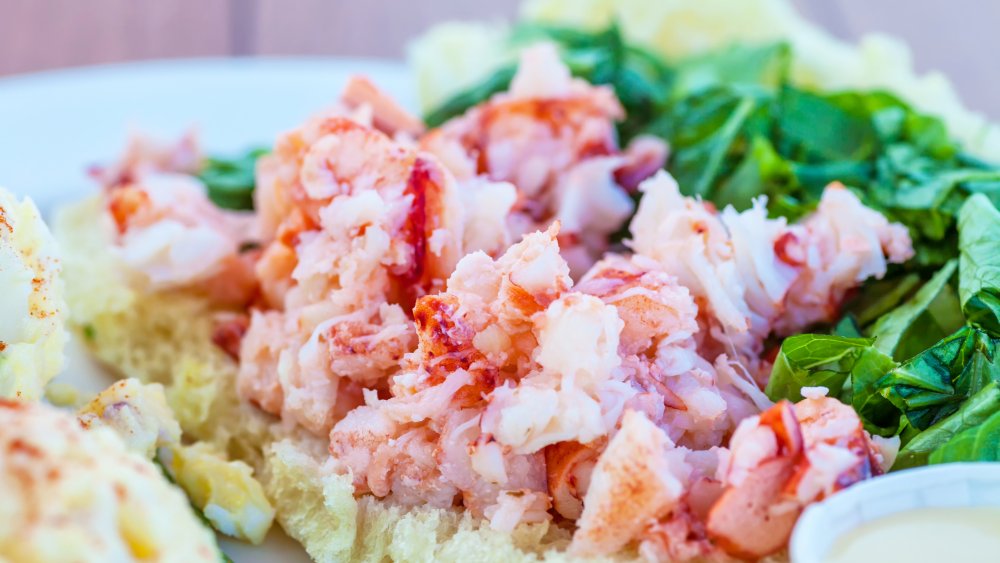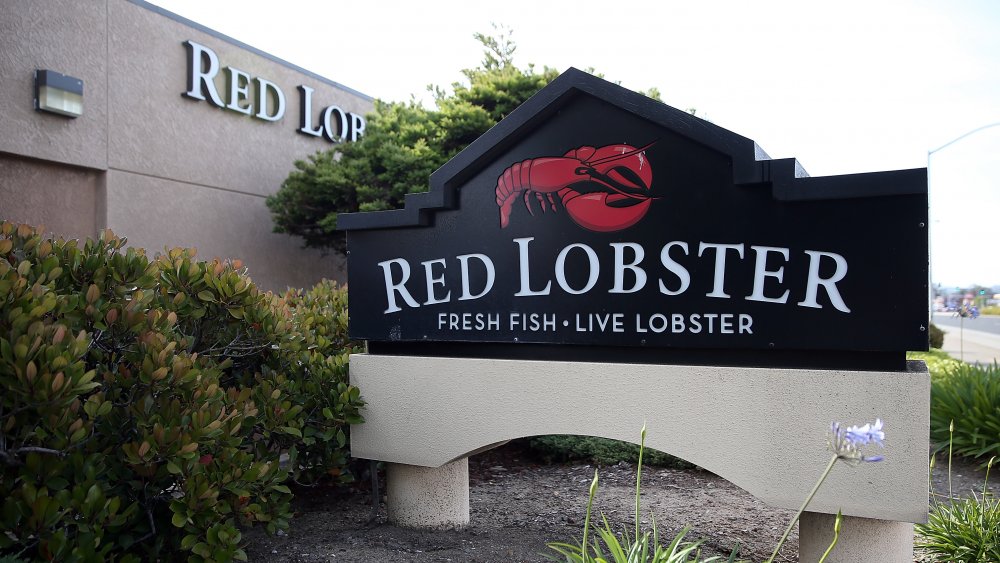What Exactly Is Imitation Lobster Meat Made Of?
If you want to go big at a seafood restaurant, you really can't go wrong with ordering the lobster. This crustacean is king of the seafood menu and people love its tender and sweet claw and tail meat — particularly when dipped in butter. Depending on where your meal is coming from, though, you may not always be getting the real deal — and you could be eating imitation lobster instead.
Imitation lobster meat tends to be a lot cheaper than real lobster, and is often a go-to for seafood restaurants looking to save a few bucks. According to some reviews we found at the Herald-Tribune, it can even "rival the real thing." So perhaps it's not all bad. What is it though, and how common is this mysterious lobster impostor?
Imitation lobster meat is a seafood mishmash
Depending on where you're getting your imitation lobster, this phony meat can be a seafood hodgepodge consisting of Alaskan pollack, whiting, or haddock (via The Today Show). For example, test of the lobster salad roll at Nathan's Famous in Coney Island, Brooklyn revealed that it wasn't lobster at all, but whiting.
Sometimes langostino — a type of crustacean closer to hermit crab than lobster — also finds its way into the mix. Seafood producers can simply take the fish or langostino as is and slap a lobster label on it. In order to make the fish meat have a similar taste and consistency of lobster, seafood manufactures put it through a process known as surimi.
According to The Chicago Tribune, to create surimi, fish is completely skinned, deboned, and washed repeatedly. After that, other things (like sugar and salt) are added in until the fish is a lot less fishy and more... lobstery. Perhaps the biggest thing that makes all the difference is that in some brands there is some actually lobster meat in imitation lobster. In those cases, manufacturers add around 17 percent, pulverized, real lobster meat into the mix. It may not be a lot, but it helps give the meat the genuine lobster taste. After that, red food dye is added and the meat is shaped into the form of a lobster tail by a machine.
Imitation lobster meat is certainly going to be a lot cheaper than the real thing, but unfortunately, it does have an environmental downside. While this phony seafood meat may be convenient, it takes a lot of water to make the stuff, and that can be pretty wasteful (via Associated Press).
Fake lobster meat is a lot more common on menus than you might think
There's a pretty good chance that you've probably ordered what you thought was real lobster and actually gotten imitation lobster meat instead. According to a report from Inside Edition, a whopping 35 percent of samples from 28 different seafood restaurants around the United States were found to have fake lobster meat. The fake lobster meat was found everywhere from mom and pop seafood restaurants to chain giants like Red Lobster.
When asked why Red Lobster would use imitation lobster in some of their dishes, a statement from the company read, "Red Lobster understands that the seasonality and availability of lobster can fluctuate, so our Lobster Bisque can contain meat from Maine lobster, langostino lobster, or, in some cases, a combination of both. Inside Edition's test was a matter of what we call 'the luck of the ladle' and both types of lobster provide the bisque with a rich, sweet taste that our guests love."
What's the best way to use fake lobster meat?
While paying for what one thinks is real lobster, but is in fact, not, might rub customers the wrong way, this meat can actually be great for home cooking, as fake lobster meat works really well for dishes where there are other flavors at play. A lobster tail with butter is going to be the star of the show, but the meat's flavor may not be as prominent in something like a salad or dip. This is where imitation lobster can be a great alternative — even if it's just used partially along with real lobster.
The Herald-Tribune recommends mixing it with mayo and crunchy veggies like celery for lobster rolls, or cooking it in a tomato sauce to pour over fettuccine for a seafood pasta dish. It can also be a great choice for a quick dish like lobster cakes (via Social Moms).
As we said, imitation lobster meat is a lot cheaper than real lobster, and some people will probably enjoy it. Just keep in mind that because the menu says "lobster," it may not actually be lobster.



